Build LoRa node using Arduino Pro Mini and HopeRF RFM95 LoRa transceiver module (V3)
Information
none
Operating system used
macOS Mojave
Hardware used
- Arduino Pro Mini (ATmega328P / 3.3V / 8 MHz)
The Arduino Pro Mini: ATmega168 will not work because there is not enough space.
I am not using the Arduino Pro Mini ATmega328P / 5V / 16 MHz because the HopeRF RFM95 LoRa transceiver module uses 3.3V.
Top view.
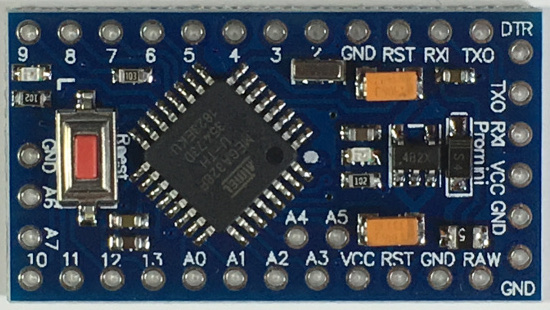
Bottom view.
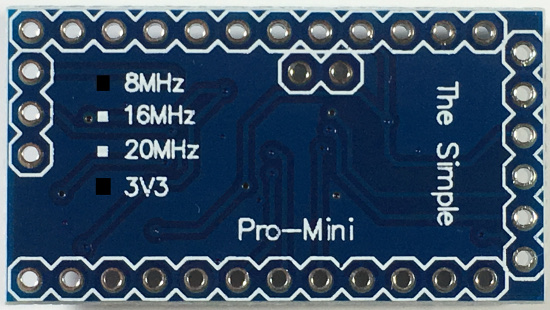
With the male pin headers soldered.
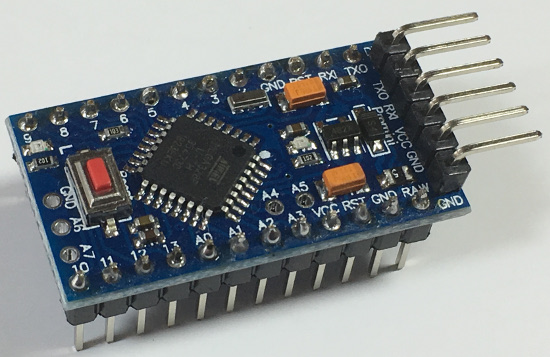
With the male pin headers soldered, bottom view.
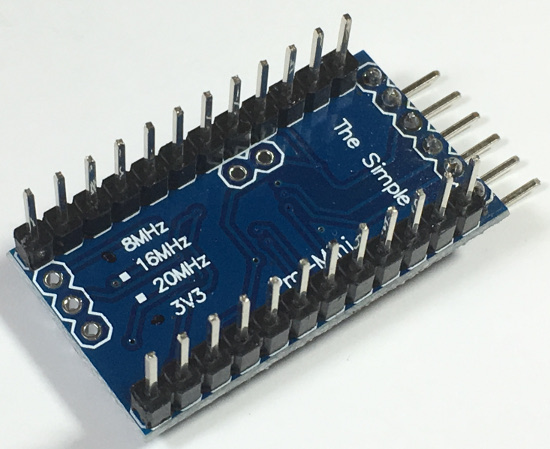
- LoRa module with dipole antenna.
How this is made see tutorial:
Modify ESP8266 module adapter plate for HopeRF RFM95 LoRa transceiver module with RP SMA female edge mount connector
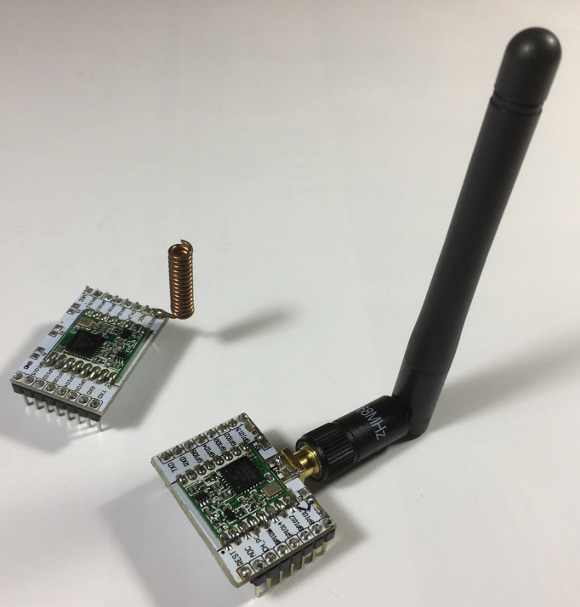
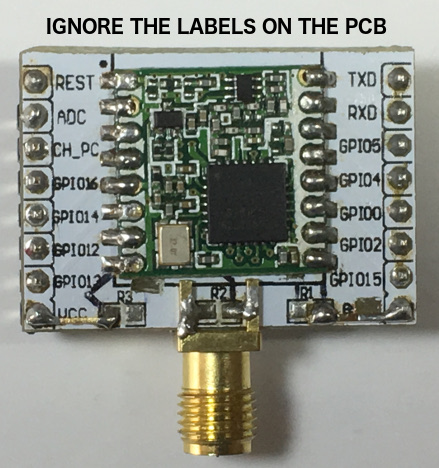
- FTDI FT232RL 3.3/5V
The Arduino Pro Mini does not have an USB connector. To communicate with the Arduino Pro Mini with your computer via an USB port an USB to TTL serial adapter is needed. In this tutorial I will be using the FTDI FT232RL adapter.
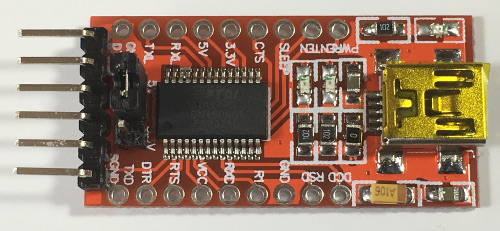
Top view.
Make sure the jumper is set to 3.3V.
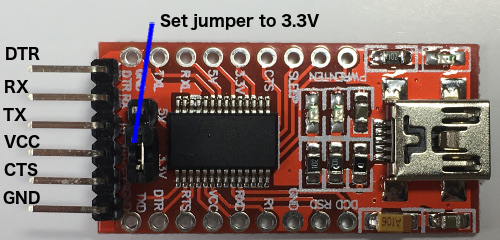
Bottom view.
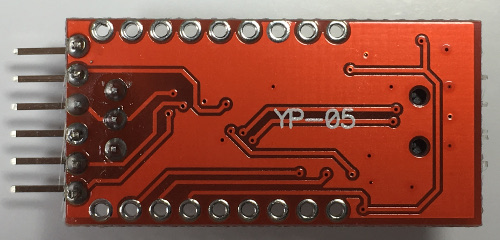
- Breadboard MB-102
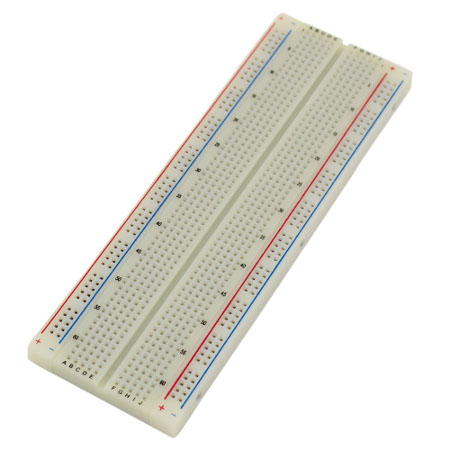
- USB 2.0 cable, USB-A > Mini USB-B (length: 80 cm)
This cable transfers the sketch from computer to the FTDI adapter.
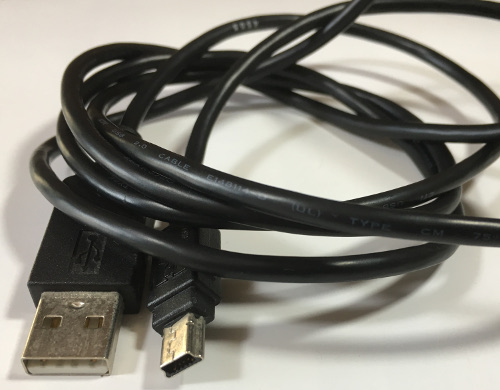
- Jumper wires 15 cm long (6x female-female)
To connect the FTDI adapter to the Arduino Pro Mini.

Connect Arduino Pro Mini and FTDI adapter with the FTDI cable.

| DTR |
DTR |
| TXO |
RX |
| RXI |
TX |
| VCC |
VCC |
| GND |
CTS |
| GND |
GND |
- Jumper wires 20 cm long (19x male-male)
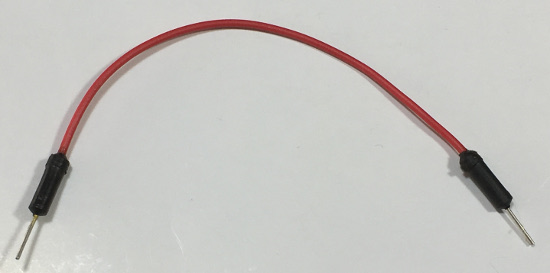
- Female pin headers 8 pins (4 pcs)
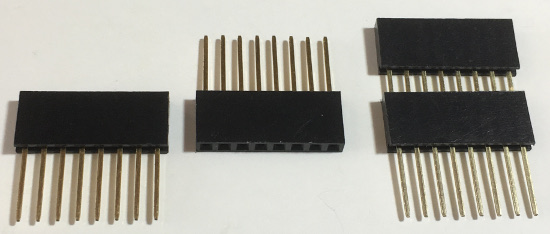
- Battery holder 3x1.5=4.5V (3x AA)
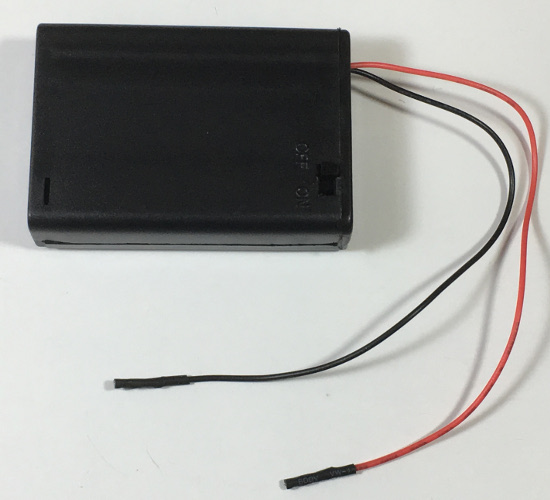
Battery holder open.
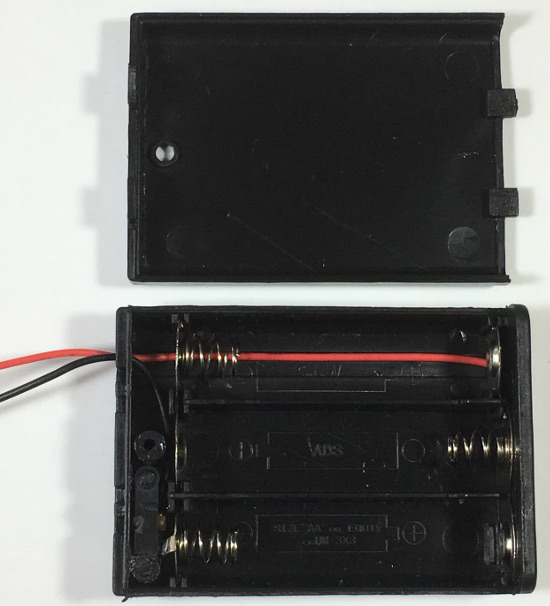
Software prerequisites
none
Procedure
- The HopeRF RFM95 LoRa transceiver module.
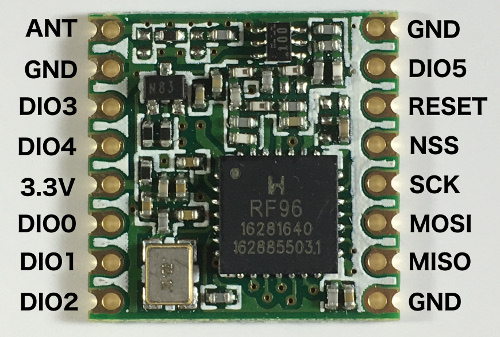
Make the following jumper wire connections between the HopeRF RFM95 LoRa transceiver module and the Arduino Pro Mini.
|
ANT
|
-
|
GND
|
-
|
|
GND
|
GND
|
DIO5
|
-
|
|
DIO3
|
-
|
RESET
|
5
|
|
DIO4
|
-
|
NSS
|
10
|
|
3.3V
|
VCC
|
SCK
|
13
|
|
DIO0
|
2
|
MOSI
|
11
|
|
DIO1
|
3
|
MISO
|
12
|
|
DIO2
|
-
|
GND
|
-
|
ANT = Antenna
GND = Ground
DIO = Digital Input/Output
NSS = Slave Select
SCK = Serial Clock (output from master)
MOSI = Master Out Slave In (data output from master)
MISO = Master In Slave Out (data output from slave)
Note:
- Always attach the dipole antenna to the SMA connector BEFORE powering up the LoRa module otherwise you may damage the HopeRF RFM95 LoRa transceiver module.
- The HopeRF RFM95 LoRa transceiver module has 3 GND pins.
Use the GND pin below the Antenna pin.
- Do not use DIO2, DIO3, DIO4 and DIO5.
- The Arduino Pro Mini uses SPI (Serial Peripheral Interface) to communicate with the HopeRF RFM95 LoRa transceiver module.
The Arduino Pro Mini is the Master and the HopeRF RFM95 LoRa transceiver module is the Slave.
Wiring HopeRF RFM95 LoRa transceiver module and Arduino Pro Mini.
Click on the image for a larger image.
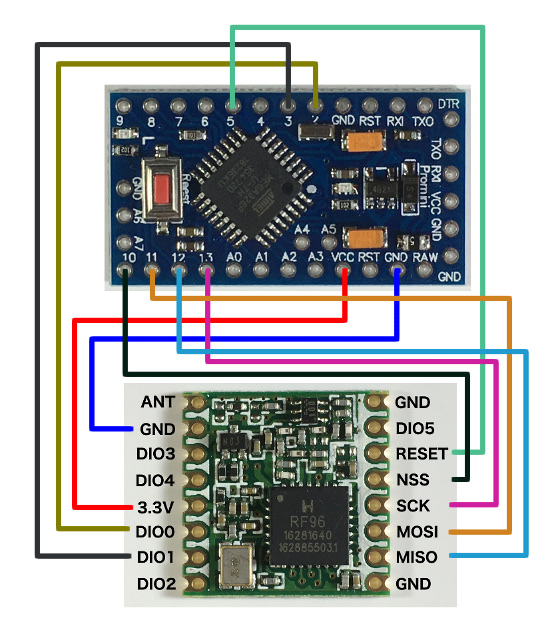
Wiring LoRa module and Arduino Pro Mini.
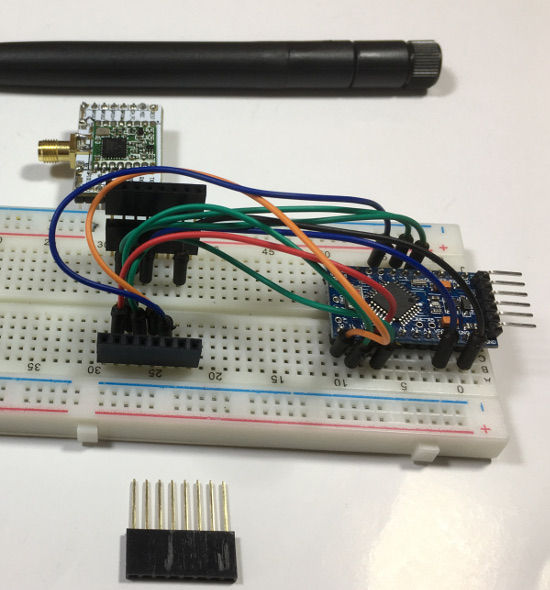
Stack two female pin headers (2x) and place them on the breadboard with the LoRa module on top.
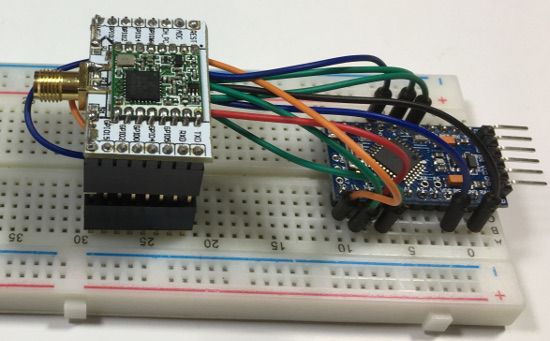
Attach dipole antenna.
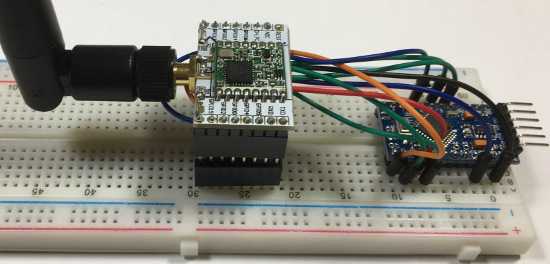
Side view.
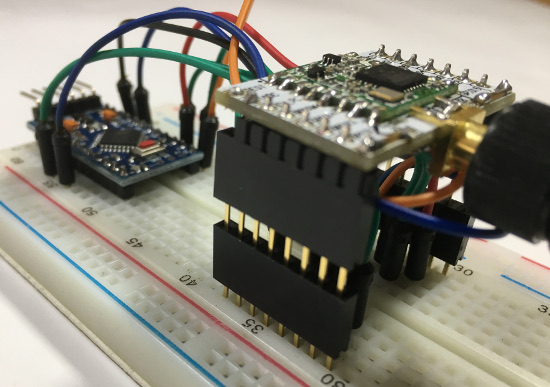
- Make sure a LoRa gateway is in your area and the LoRa node can send messages to that gateway.
Use this map: https://www.thethingsnetwork.org/map
- Install the latest open source Arduino IDE.
https://www.arduino.cc/en/Main/Software
- Install the Adafruit Unified Sensor library.
- In the Arduino IDE, select menu Sketch | Include Library | Manage Libraries
- In the search box enter: adafruit unified
- Click the Adafruit Unified Sensor library by Adafruit.
More info: https://github.com/adafruit/Adafruit_Sensor
- Select the latest version and press the Install button.
For this tutorial I installed version 1.0.2
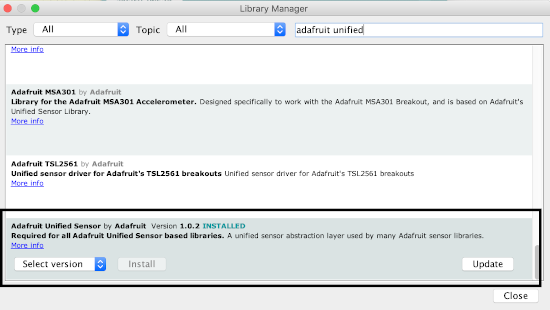
- Install the DHT11 library.
- In the Arduino IDE, select menu Sketch | Include Library | Manage Libraries
- In the search box enter: dht11
- Click the DHT sensor library by Adafruit.
More info: https://github.com/adafruit/DHT-sensor-library
- Select the latest version and press the Install button.
For this tutorial I installed version 1.3.0
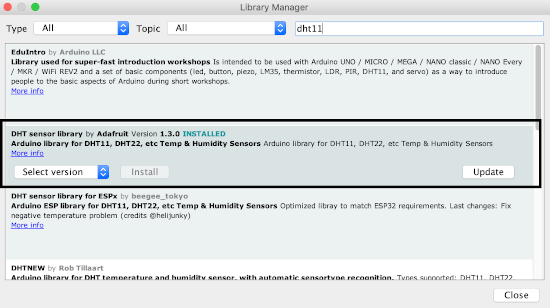
- Install the MCCI LoRaWAN LMIC library.
- In the Arduino IDE, select menu Sketch | Include Library | Manage Libraries
- In the search box enter: MCCI
- Click the MCCI LoRaWAN LMIC library by IBM, Matthijs Kooijman, Terry Moore, ChaeHee Won, Frank Rose.
More info: https://github.com/mcci-catena/arduino-lmic
- Select the latest version and press the Install button.
For this tutorial I installed version 4.0.0
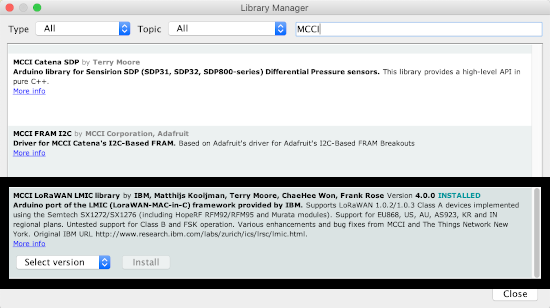
- Configure the MCCI LoRaWAN LMIC Library according to your situation.
Edit file lmic_project_config.h. This file can be found at:
../libraries/MCCI_LoRaWAN_LMIC_library/project_config
I made the following changes to MY lmic_project_config.h file.
Make changes according to YOUR situation.
// project-specific definitions
#define CFG_eu868 1
//#define CFG_us915 1
//#define CFG_au915 1
//#define CFG_as923 1
//#define LMIC_COUNTRY_CODE LMIC_COUNTRY_CODE_JP /* for as923-JP */
//#define CFG_kr920 1
//#define CFG_in866 1
#define CFG_sx1276_radio 1
//#define LMIC_USE_INTERRUPTS
#define LMIC_LORAWAN_SPEC_VERSION LMIC_LORAWAN_SPEC_VERSION_1_0_2
#define DISABLE_PING
#define DISABLE_BEACONS
#define LMIC_ENABLE_DeviceTimeReq 0
- Create an account on The Things Stack Community Edition (TTS CE).
- Login The Things Stack Community Edition console.
Make sure you select a cluster (Europe, North America, Australia) near your location.
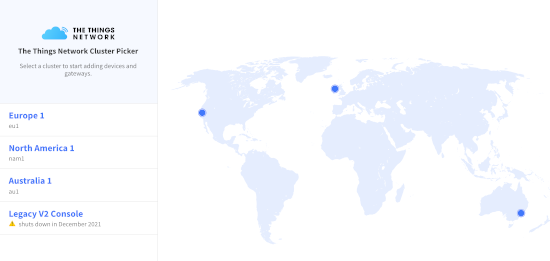
- Add an application.
For example:
Application ID: youtube-demo-app2 (must be unique)
Application name: youtube-demo-app2 (can be anything)
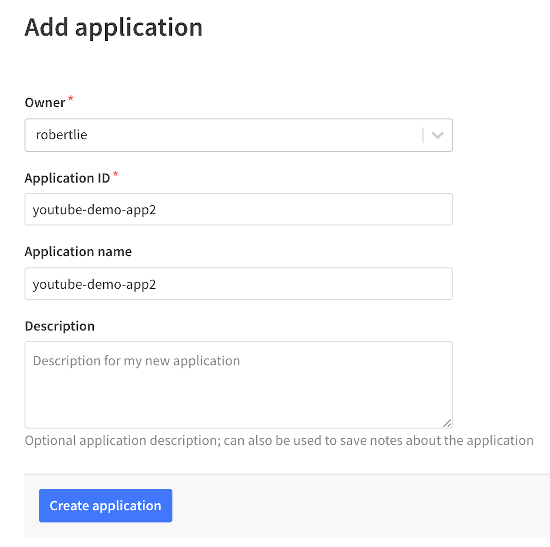
- The HopeRF RFM95 LoRa transceiver module does not have a built-in DevEUI or AppEUI.
In such case you should let the TTSCE console generate the required DevEUI or AppEUI.
Herebelow is an example of generated AppEUI, DevEUI and AppKey in the TTSCE console.
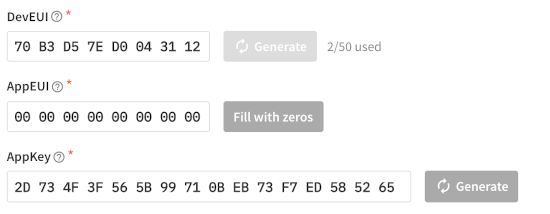
The AppEUI, DevEUI and AppKey are used in the Arduino sketch ttsce-otaa-pro-mini-sensors.ino.
More about this sketch later.
In this Arduino sketch the DevEUI or AppEUI must be converted to an array of 16 bytes in LSB order.
The AppKey must converted to an array of 32 bytes in MSB order.
I have created an online tool which converts these values to an bytes array in its correct order (LSB / MSB):
https://www.mobilefish.com/download/lora/eui_key_converter.html
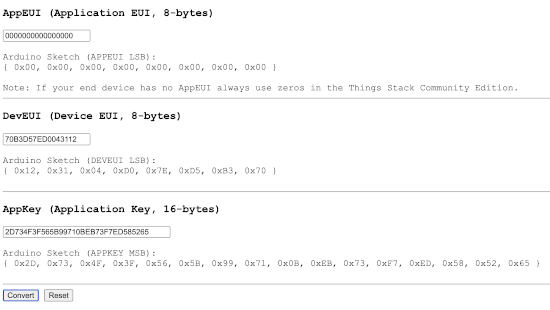
As of July 2021, you can now generate the required AppEUI, DevEUI and AppKey in the TTSCE console.
Do NOT use my lorawan_device.html online tool!
This tutorial uses the AppEUI, DevEUI and AppKey generated by my online tool lorawan_device.html because this tutorial was written before July 2021.
For the AppEUI (8 bytes) you can use a value with all zeros.
For the DevEUI (8 bytes) you can generate your own local adminstered MAC address.
You can use this online tool:
https://www.mobilefish.com/download/lora/lorawan_device.html (DO NOT USE THIS TOOL)
The online tool generated these values:
AppEUI:
TTS Community Edition Console (AppEUI):
0000000000000000
Arduino Sketch (APPEUI LSB):
{0x00, 0x00, 0x00, 0x00, 0x00, 0x00, 0x00, 0x00}
DevEUI (Local administered MAC address)
TTS Community Edition Console (DevEUI):
6672029985F6FC00
Arduino Sketch (DEVEUI LSB):
{0x00, 0xFC, 0xF6, 0x85, 0x99, 0x02, 0x72, 0x66}
Note: The DevEUI second hex value from the left should be 2, 6, A, or E
AppKey
TTS Community Edition Console (AppKey):
52E54E35B91D36AAEA4498DBFB8BB901
Arduino Sketch (APPKEY MSB):
{0x52, 0xE5, 0x4E, 0x35, 0xB9, 0x1D, 0x36, 0xAA, 0xEA, 0x44, 0x98, 0xDB, 0xFB, 0x8B, 0xB9, 0x01}
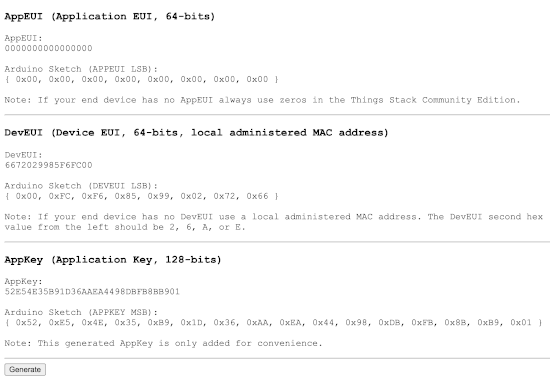
- Register end device (Preparation).
Activation mode: Over the air activation (OTAA)
LoRaWAN version: MAC V1.0.2
Network Server address: eu1.cloud.thethings.network (Cluster: Europe)
Application Server address: eu1.cloud.thethings.network (Cluster: Europe)
Join Server address: eu1.cloud.thethings.network (Cluster: Europe)
Note: Why use MAC V1.0.2?
Because the MCCI LoRaWAN LMIC library has only been tested with LoRaWAN 1.0.2/1.0.3 networks.
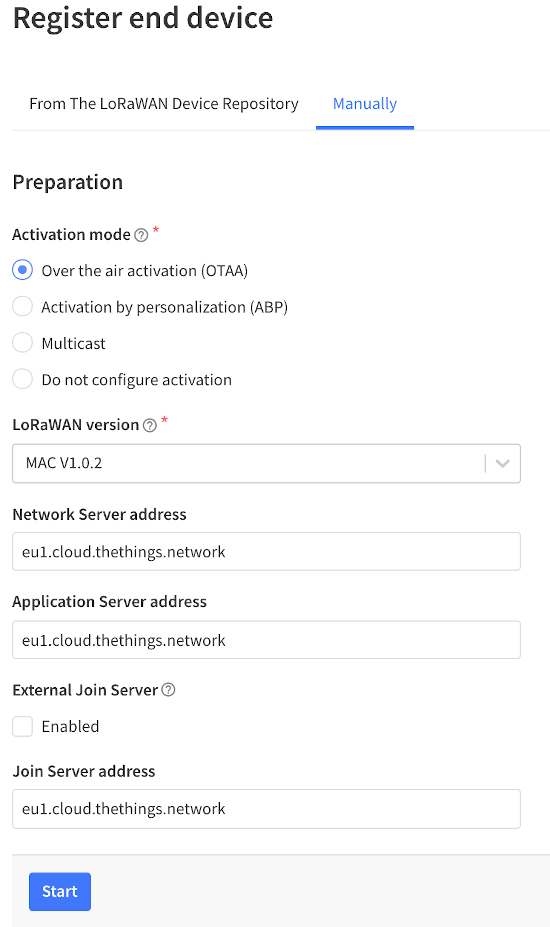
- Register end device (Step 1).
End device ID: youtube-demo-device2 (must be unique)
AppEUI: 00 00 00 00 00 00 00 00 (If end device has no AppEUI)
DevEUI: 66 72 02 99 85 F6 FC 00 (If end device has no DevEUI, local adminstered MAC address)
End device name: youtube-demo-device2 (can be anything)
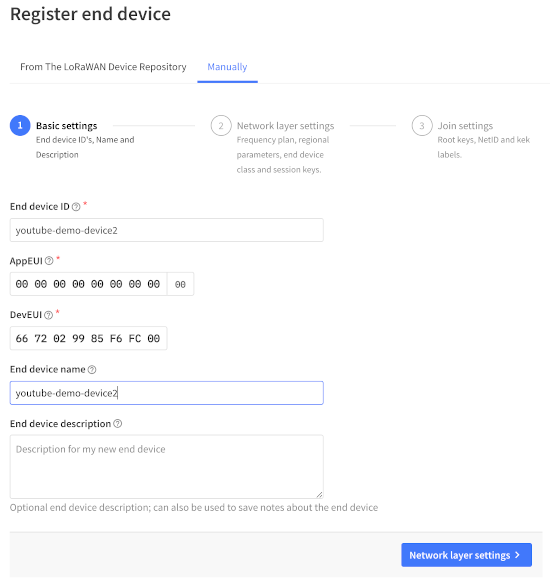
- Register end device (Step 2).
Frequency plan: Europe 863-870 MHz (SF9 for RX2 - recommended)
LoRaWAN version: MAC V1.0.2
Regional Parameters version: PHY V1.0.2 REV B
Note: If you selected MAC V1.0.2 you can choose between PHY V1.0.2 REV A and PHY V1.0.2 REV B.
What the difference is between these 2 revisions can be found in
LoRaWAN 1.0.2 Regional Parameters revision B document (chapter 3)
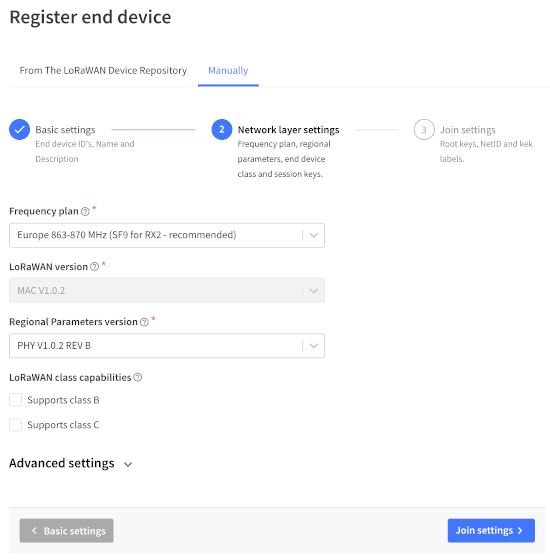
- Register end device (Step 3).
AppKey: 52 E5 4E 35 B9 1D 36 AA EA 44 98 DB FB 8B B9 01
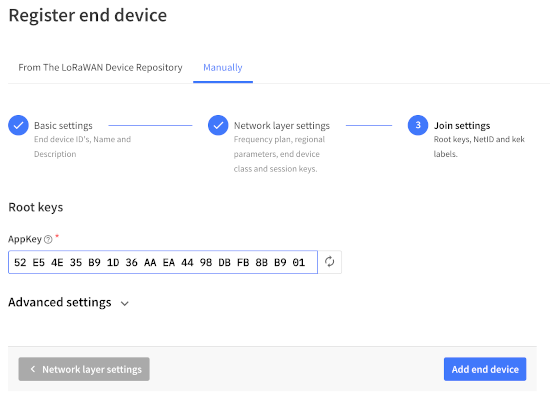
- In the Arduino IDE, select menu File | Examples | MCC LoRaWAN LMIC library and select the ttn-otaa sketch.
Re-save the ttn-otaa sketch and call it ttsce-otaa-helloworld.
From https://www.mobilefish.com/download/lora/lorawan_device.html copy DevEUI, AppEUI and AppKey to the ttsce-otaa-helloworld sketch.
Watch out:
The DevEUI must be in little-endian format.
The AppKey must be in big endian format.
- Modify the ttsce-otaa-helloworld sketch.
// Pin mapping
const lmic_pinmap lmic_pins = {
.nss = 10,
.rxtx = LMIC_UNUSED_PIN,
.rst = 5,
.dio = {2, 3, LMIC_UNUSED_PIN},
};
- The Arduino Pro mini is running at 8MHz and is relatively slow for LMIC and needs an adjustment by relaxing the timing.
Add the line: LMIC_setClockError(MAX_CLOCK_ERROR * 1 / 100);
in the setup function, between the LMIC_Reset() and the do_send(&sendjob).
It makes the receive windows bigger, in case the clock is 1% faster or slower.
In the ttn-otaa-helloworld sketch, I added the above mentioned line in the setup function.
See the red marked lines:
void setup() {
Serial.begin(9600);
Serial.println(F("Starting"));
#ifdef VCC_ENABLE
// For Pinoccio Scout boards
pinMode(VCC_ENABLE, OUTPUT);
digitalWrite(VCC_ENABLE, HIGH);
delay(1000);
#endif
// LMIC init
os_init();
// Reset the MAC state. Session and pending data transfers will be discarded.
LMIC_reset();
// Use with Arduino Pro Mini ATmega328P 3.3V 8 MHz
// Let LMIC compensate for +/- 1% clock error
LMIC_setClockError(MAX_CLOCK_ERROR * 1 / 100);
// Start job (sending automatically starts OTAA too)
do_send(&sendjob);
}
Here is the final sketch: ttsce-otaa-helloworld.ino.
- In this sketch the message "Hello, world!” will be transmitted every 60 seconds, see variables: mydata[] and TX_INTERVAL.
- Connect the Arduino Pro Mini to your computer using the USB cable and FTDI adapter.
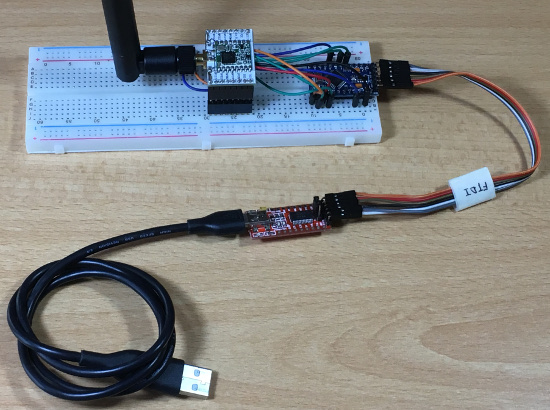
- In the Arduino IDE, select menu Tools | Board and select: Arduino Pro or Pro Mini
In the Arduino IDE, select menu Tools | Processor: ATmega328P (3.3V, 8MHz)
In the Arduino IDE, select menu Tools | Port: your port
- Compile ttsce-otaa-helloworld sketch.
You should not see any errors (but there are warnings).

- Upload the ttsce-otaa-mydemo sketch to the Arduino Pro Mini.
You should not see any errors.
- In The Things Stack Community Edition console, the "Hello, world!" message (in hex) is received every 60 seconds.

- If you want to convert the payload into a readable text:
- Select your application in the "Application Overview" screen.
- Select "Payload formatters".
- Select "Uplink".
- Select "Formatter type: Javascript".
Paste the
decodeuplink payload formatter
in the textbox.
On the bottom of the page press the "Save changes" button.
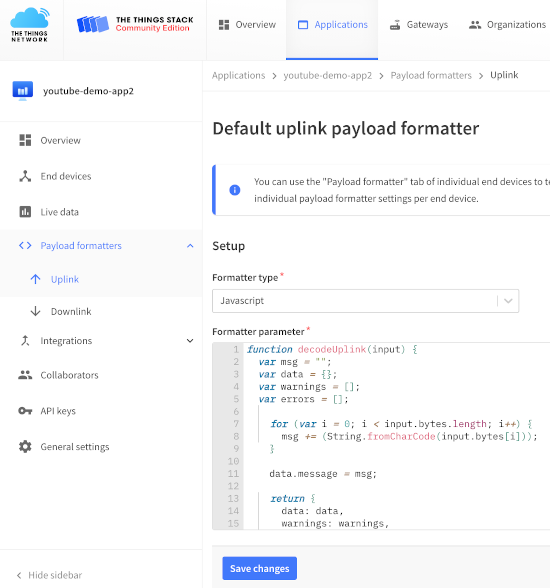
If you select "Live data" you will see the payload in human readable text.
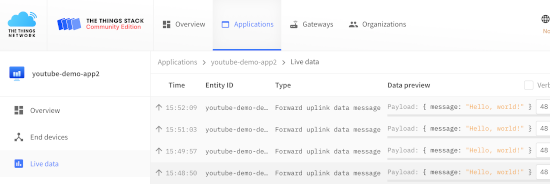
- The Arduino Pro Mini can be powered by 3x AA (1.5V) batteries.
Disconnect the FTDI jumper wires from the Arduino Pro Mini and connect the battery holder.
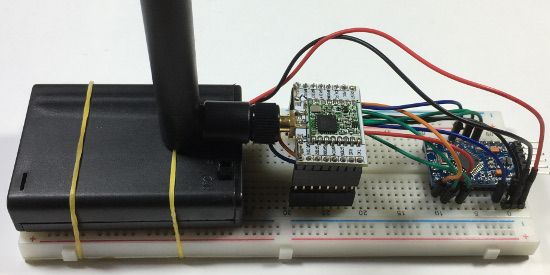
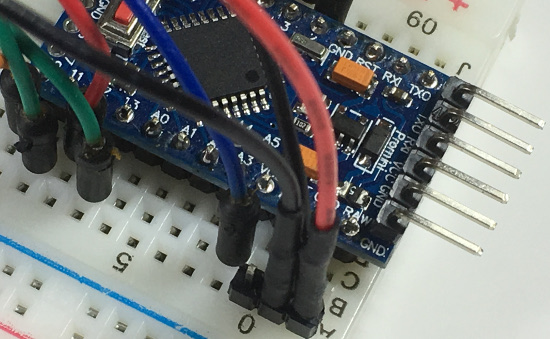
|
RAW
|
+ (red wire)
|
|
GND
|
- (black wire)
|
- Optionally a push button, 2 LEDs (yellow, green) and a DHT11 sensor can be added.
A simple push button and 2 LEDs (yellow, green)
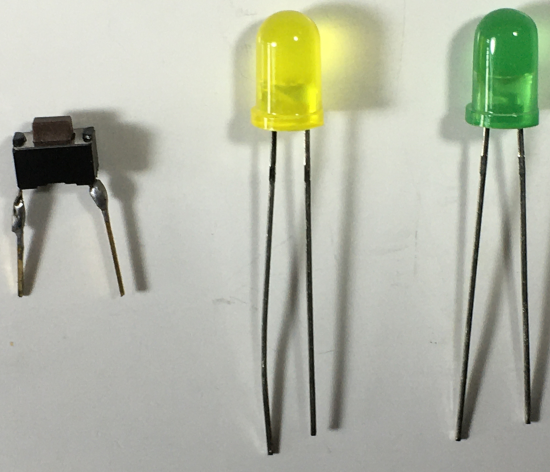
DHT11 sensor module (DHT = Digital Humidity Temperature)
This particular DHT11 sensor comes with a 10 kΩ pull up resistor
from the data pin to Vcc.
- Pin VCC connected to Arduino Pro Mini 3.3V
- Pin DATA connected to Arduino Pro Mini pin 7
- Pin GND connected to Arduino Pro Mini GND
A DHT11 sensor is cheap, less precise and less accurate.
For better accuracy and precision use a DHT22.
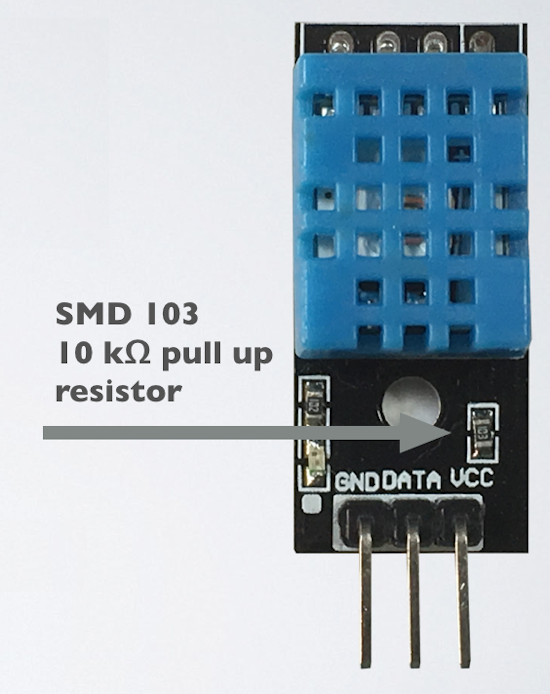
Specification:
Supply voltage: 3.3 ~ 5.5V DC
Output: single-bus digital signal
Measuring range: humidity 20-90% RH, temperature 0 ~ 50°C
Accuracy: humidity ±5% RH, temperature ±2°C
Resolution: Humidity 1% RH, temperature 1°C
Long-term stability: < ±1% RH / Year
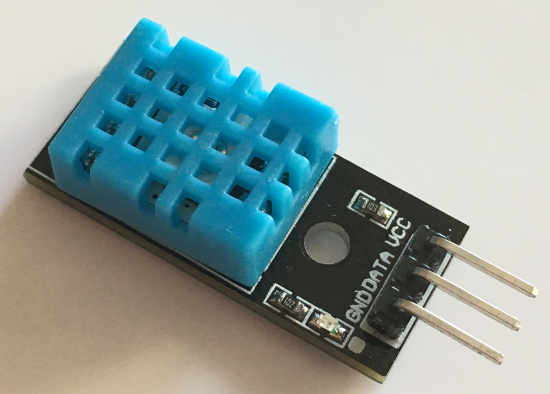
Click on the image for a larger image.
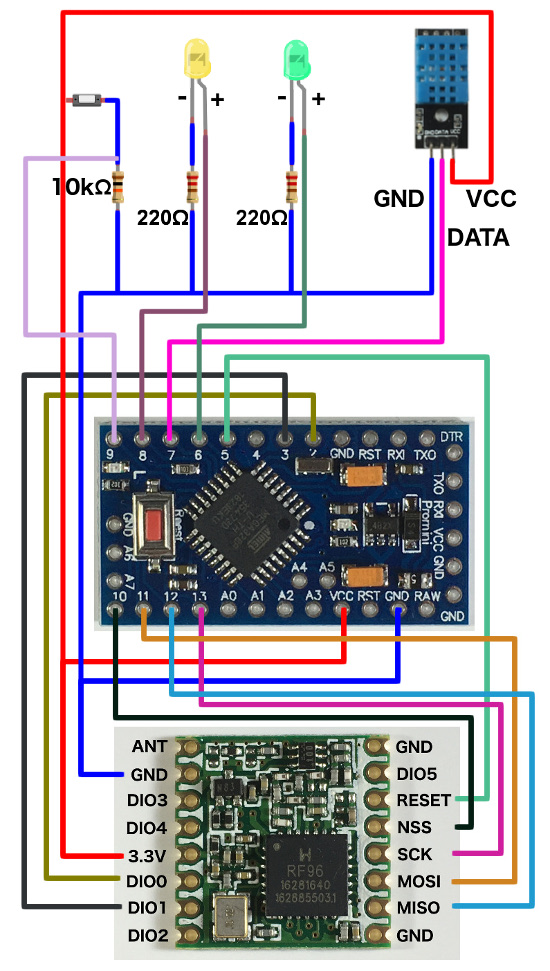
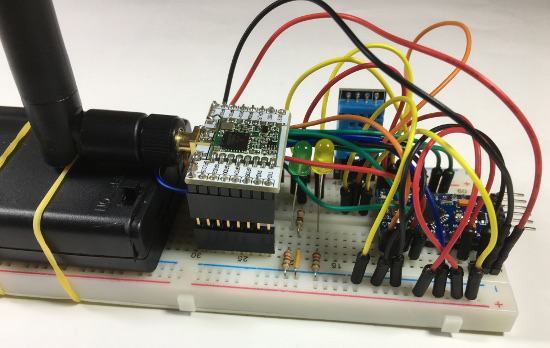
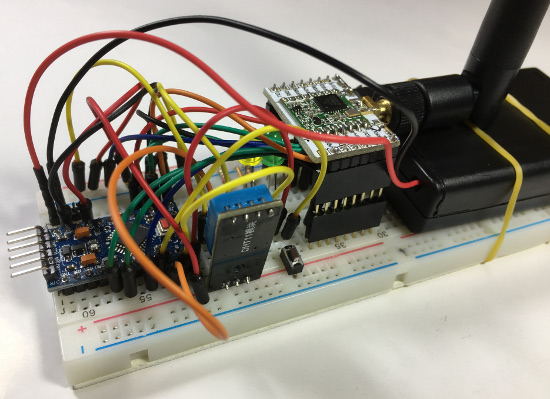
The sketch for this circuit diagram: ttsce-otaa-pro-mini-sensors.ino.
For this sketch, to make the payload data more human readable in the TTS CE console, select "Payload formatters", select "Uplink", select "Javascript" and copy and paste the decodeUplink function from this link
ttsce-otaa-pro-mini-sensors-decodeuplink.txt and paste it in this field.
Receiving DHT11 sensor data and button pressed in TTS CE.

Arduino IDE serial monitor output.
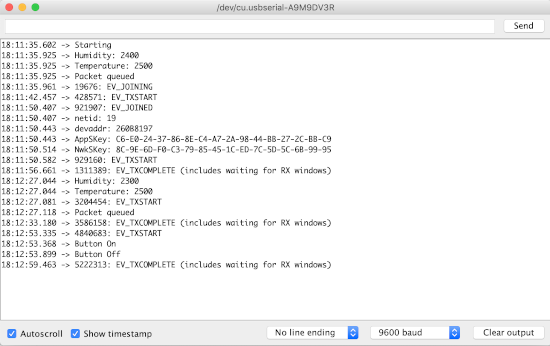
- You can also send data from the TTS CE console to the end node.
The LEDs can be switched ON or OFF.
In the Arduino sketch ttsce-otaa-pro-mini-sensors.ino the fPort plays an important role.
Make sure fPort 3 is used!
|
00
|
OFF
|
OFF
|
|
01
|
ON
|
OFF
|
|
02
|
OFF
|
ON
|
|
03
|
ON
|
ON
|
- In the TTS CE console, select the application youtube-demo-app2, select the end device youtube-demo-device2, select tab Messaging and select Downlink.
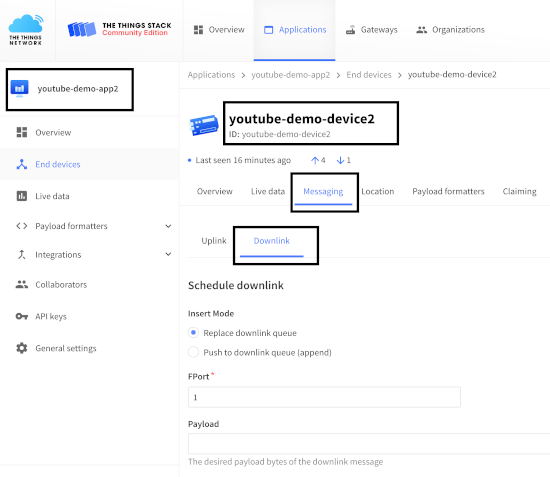
- To switch the yellow LED on:
- Insert Mode: Push to downlink queue (append)
- FPort = 3
- Payload = 01
Press the Schedule downlink button.
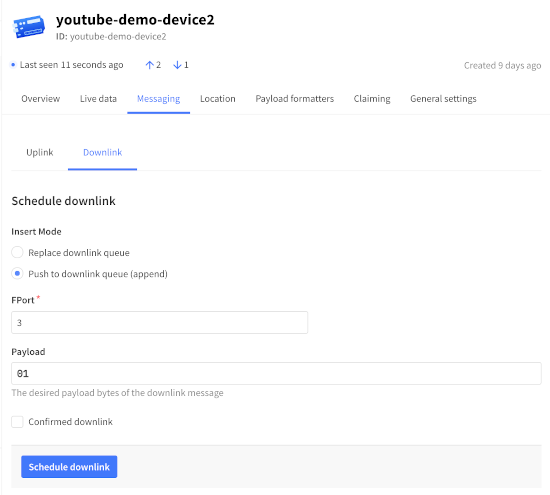
- In the Live data screen you will see that a downlink message is sent.

- On the end device the yellow LED is switch on (it make take several seconds).
In the images below I have removed the battery holder and I have re-ordered the components on the breadboard to make it less cluttered.
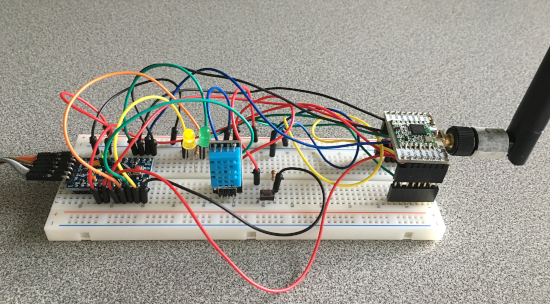
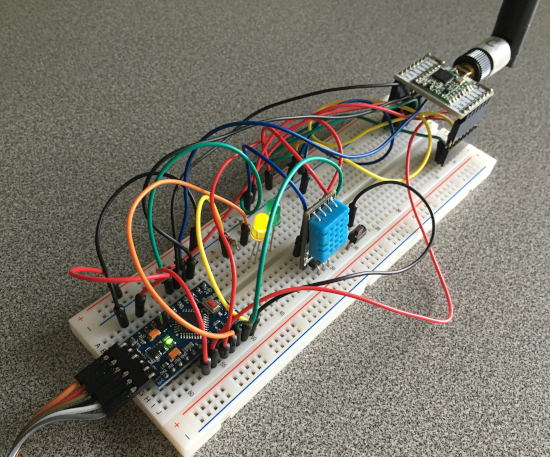
The AppSKey, NwkSKey and timestamp in the image below are different compared to previous image because the end device has been stopped and started several times and the images were made at different days and times.
The Arduino Serial Monitor displays the following:
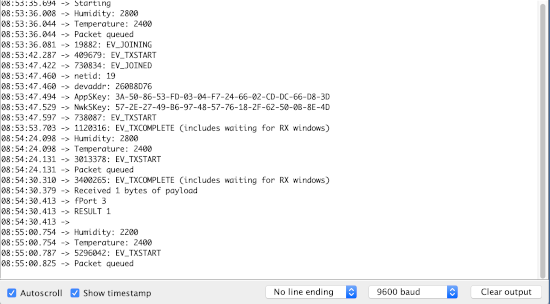
- With the hex values mentioned in the table above you can now switch the LEDs on or off.
|























































